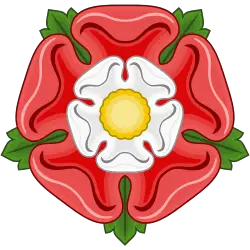In medieval times, flowers and plants were often used in art, literature and rituals as symbols. How much do you know about plants and their symbols? Find out with this fun quiz.
Medieval plants and flowers and their symbolism
Correct! It was often used at weddings and funerals. Ophelia, in Shakespeare's Hamlet, says to Hamlet "There's rosemary, that's for remembrance, pray you love, remember."
Wrong! It's remembrance. It was often used at weddings and funerals. Ophelia, in Shakespeare's Hamlet, says to Hamlet "There's rosemary, that's for remembrance, pray you love, remember."
Correct!
Wrong! It's the violet.
Correct!
Wrong! It's the cowslip.
Correct! According to a BBC blog post "legends tell how they first appeared on earth when Christ carried the cross. As she walked behind Him, the Virgin's tears dropped on the ground and carnations sprang up where they fell - because of this they came to symbolise undying love".
Wrong! It's carnations (also known as pinks and gillyflowers). According to a BBC blog post "legends tell how they first appeared on earth when Christ carried the cross. As she walked behind Him, the Virgin's tears dropped on the ground and carnations sprang up where they fell - because of this they came to symbolise undying love".
Correct! It also symbolised purity, love, beauty, patience and simplicity.
Wrong! It's innocence. It also symbolised purity, love, beauty, patience and simplicity.
Correct! This is why it is said to hang down. It is linked to sorrow.
Wrong! It's the lily of the valley. This is why it is said to hang down. It is linked to sorrow.
Correct!
Wrong! It's the pansy.
Correct! In "Hamlet", Ophelia says to Hamlet "There's rue for you and here's some for me. It's called the herb-grace o' Sundays. O you must wear your rue with difference."
Wrong! It's rue. In "Hamlet", Ophelia says to Hamlet "There's rue for you and here's some for me. It's called the herb-grace o' Sundays. O you must wear your rue with difference."
Correct! According to livinghistorytoday.com "A legend tells of the Christ child sitting in his mother’s lap, and wishing that future generations could see them like this. So he touched her eyes and waved his hand over the ground and forget me nots sprang forth."
Wrong! It's the forget-me-not. According to livinghistorytoday.com "A legend tells of the Christ child sitting in his mother’s lap, and wishing that future generations could see them like this. So he touched her eyes and waved his hand over the ground and forget me nots sprang forth."
Correct!
Wrong! It's the oak.



7 out 10 my best yet I’ve a lot to thank my allotment for